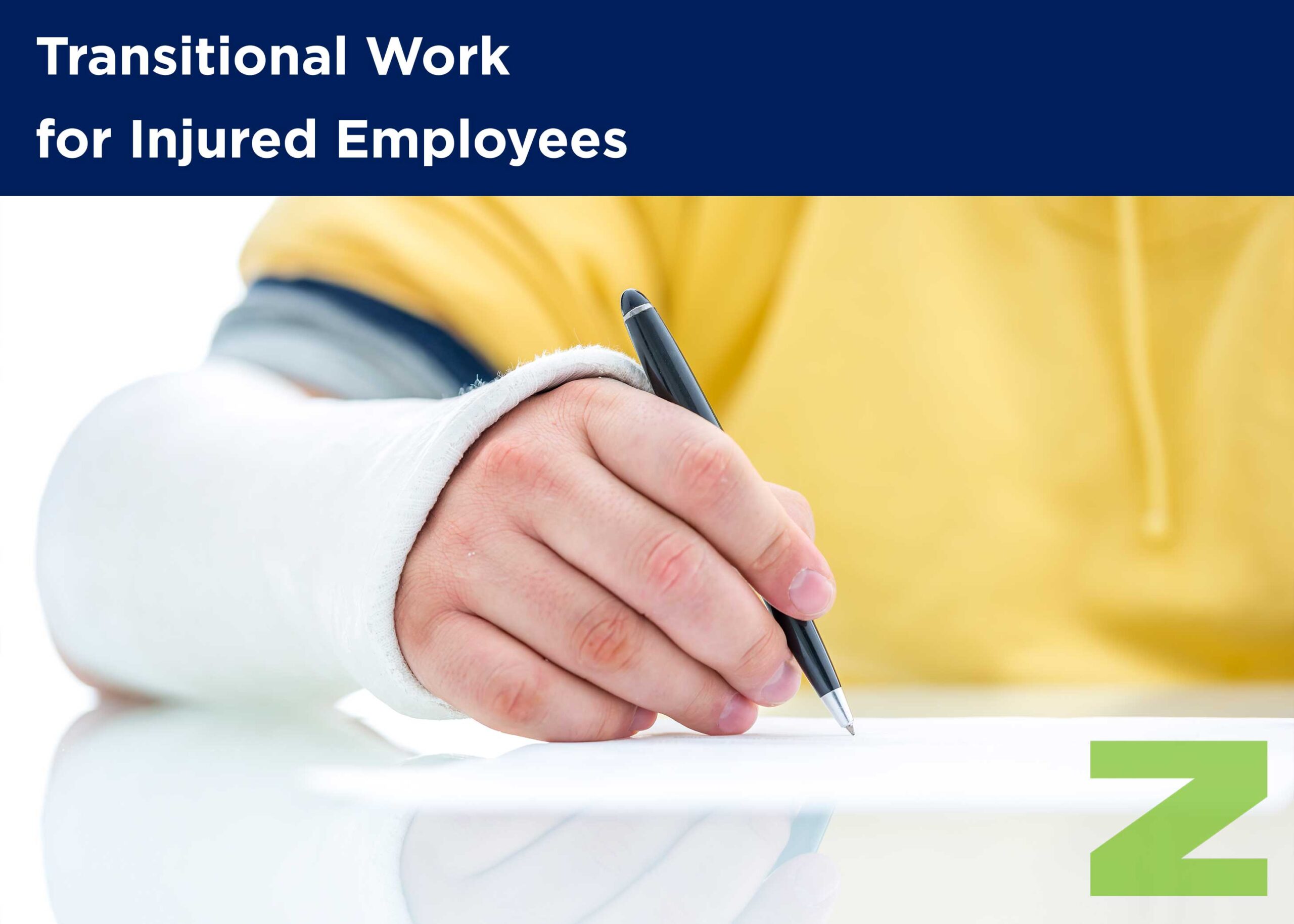Loss Control Insights
Tips for Finding Transitional Work for Injured Employees
How and when to allow injured employees to return to work is a frequent dilemma, especially when employees are still unable to perform their regular duties. It can be tempting to take the easy route and leave these workers on the sidelines, but that is not the best move. The longer injured employees are away from work, the more unlikely it is they’ll return. Research shows that after three weeks off the job, there is a 75% chance of return, and after a year, that chance decreases to only 1%. This hurts both the employee and company—workers lose employment while your company faces rehiring and training expenses. Additionally, you may incur significant claim costs, raising your company’s future experience modification factor.
According to EMC Injury Management Consultant Angela Bos, your best option is to bring employees back as quickly as possible. This approach may include initiating light duty or modified tasks for the employee. “You have to think outside the box sometimes, which can be difficult, especially for manual labor companies, such as construction or landscaping,” Bos says.
To avoid scrambling to find tasks each time an injured employee returns to work, Bos suggests keeping a list of “rainy day” tasks. This can include things that need to be done in the office or at a job site but are not time-sensitive. “Most importantly, this strategy focuses on what injured employees can do rather than what they can’t do,” Bos says.
It’s important to know the abilities and limitations of each employee as they return to work. This requires instructions from health care providers, including a list of restrictions. If the employee belongs to a union, there may be additional restrictions on alternative tasks you’ll need to take into consideration.
Be sensitive when creating plans so returning employees don’t feel as if you’re assigning makeshift or meaningless work. Show respect and appreciation by giving them worthwhile tasks that align with their skills and abilities. Remind injured employees they are contributing to the overall good of the company and the work accomplished is valued, even if it’s a less physical job.
Questions to Ask
EMC Injury Management Consultants compiled a list of questions employers can use to help guide supervisors as they develop a return to work plan. This list should help create an inventory of transitional tasks that supervisors can refer to each time an employee is returning to work after an injury. A sample of these questions follows. For a complete list, talk to your EMC Injury Management Consultant or email losscontrol.injurymgmt@emcins.com.
- What required activities does our department/company never have time to do or finish?
- What scheduled projects and reporting deadlines consistently create a rush situation?
- What safety-related training do employees need to start and/or finish?
- What are some needed special projects?
- Are there essential functions that could be turned into helper or assistant tasks?
- What department work can be done at home?
- How could we temporarily modify work tasks to accommodate someone with physical restrictions, such as weight limits or limited driving ability?
- How can the skills, abilities and traits of our jobs be used in other areas of the company?
- What changes would have to happen to allow temporary work options in our department?
- Do we have a solid understanding of the collective and individual objective and subjective skills in this department?





